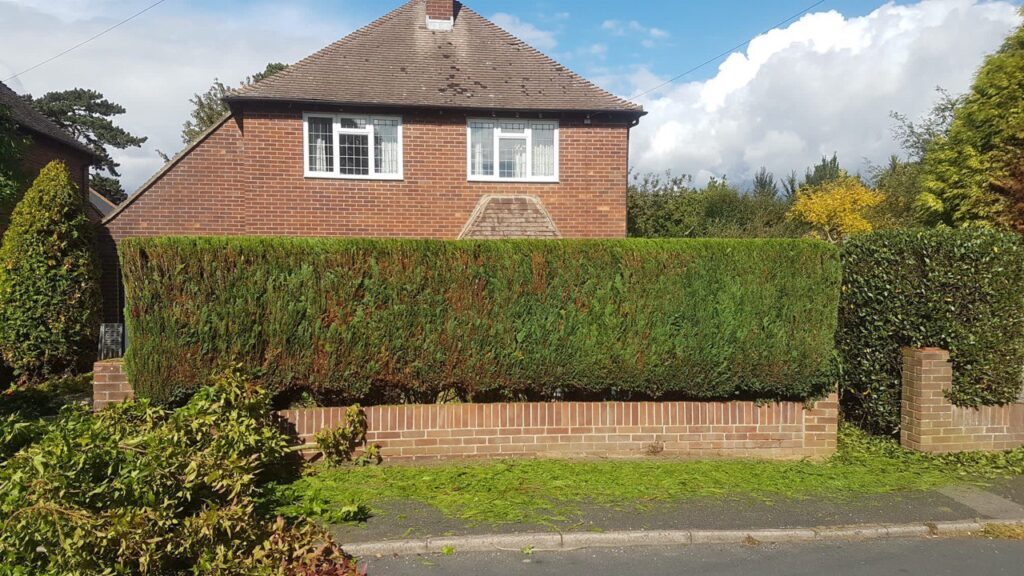Introduction: Trees can become a significant hazard in the wake of severe storms or inclement weather, posing risks to property, infrastructure, and human safety. When faced with emergencies involving storm-damaged trees, swift and decisive action is essential to mitigate further damage and ensure the safety of those affected. In this blog post, LM Tree Surgery Chichester discusses the importance of emergency tree felling and provides insights into dealing with storm-damaged trees in urgent situations.
Understanding the Urgency:
- Immediate Threats: Storm-damaged trees with weakened branches, leaning trunks, or uprooted roots may threaten buildings, vehicles, power lines, and passersby.
- Safety Concerns: Fallen trees or branches can block roads, obstruct pathways, and create hazardous conditions for pedestrians and motorists, necessitating prompt removal to restore safety and accessibility.
- Property Damage: Unaddressed storm-damaged trees can cause extensive property damage, including roof punctures, structural collapses, and landscape destruction, leading to costly repairs and insurance claims.
Responding to Emergency Situations:
- Assess the Damage: Immediately after a storm passes, thoroughly assess your property to identify any storm-damaged trees or hazardous conditions. Look for signs of uprooting, leaning, splitting, or broken branches that could pose risks.
- Prioritise Safety: Prioritise safety above all else by establishing safety perimeters and warning signs around affected areas to prevent access by unauthorised individuals. Keep a safe distance from damaged trees and avoid standing under or near unstable branches.
- Contact Professionals: In cases of severe damage or extensive tree hazards, seek assistance from certified arborists or care professionals experienced in emergency tree felling. They have the expertise, equipment, and training to assess, manage, and remove storm-damaged trees safely.
- Execute Swift Action: Once a tree’s hazard potential has been assessed, take swift action to address the situation. Depending on the severity of the damage and the tree’s condition, emergency tree felling may be necessary to eliminate immediate threats and prevent further damage.
Conducting Emergency Tree Felling:
- Establish Clear Escape Routes: Establish clear escape routes and safety zones for workers and bystanders before commencing emergency tree felling. Ensure that all individuals involved in the operation understand and adhere to safety protocols.
- Use Proper Equipment: Utilise appropriate tools and equipment, including chainsaws, rigging gear, and personal protective equipment (PPE), to safely fall storm-damaged trees. Exercise caution when operating machinery and follow manufacturer guidelines and safety precautions.
- Employ Controlled Felling Techniques: Controlled felling techniques, such as directional notching and back-cutting, guide the tree’s fall in a predetermined direction away from structures and utilities. Consider rigging or support methods to control the tree’s descent and minimise impact.
- Monitor Surroundings: Throughout the felling process, closely monitor the surroundings for any changes or hazards, such as shifting debris, unstable branches, or unexpected movements. Communicate effectively with team members and bystanders to ensure everyone remains safe.
Conclusion: Emergency tree felling for storm-damaged trees is a critical response measure to mitigate risks and ensure the safety of individuals and property in affected areas. By understanding the situation’s urgency, prioritising safety, seeking professional assistance, and executing swift and controlled action, homeowners and property managers can effectively manage emergency tree felling operations and minimise the impact of storm damage.
Call us on: 01243 974 685
Click here to find out more about LM Tree Surgery Chichester
Click here to complete our contact form and see how we can help with your tree’s needs.

